Discover 5 Unique Destinations in Spain and Italy
Summer is the perfect time to enjoy the sun, sand, and sea. But what if you could combine those beach vacations with a trip back in time? Today we invite you to discover beaches that not only allow you to relax and enjoy the sea but also hold secrets of ancient civilisations.
In this article, we present a selection of beaches in Spain and Italy that stand out for both their natural beauty and archaeological richness, offering you a unique opportunity to immerse yourself in the history and culture of past civilisations while relaxing by the sea.
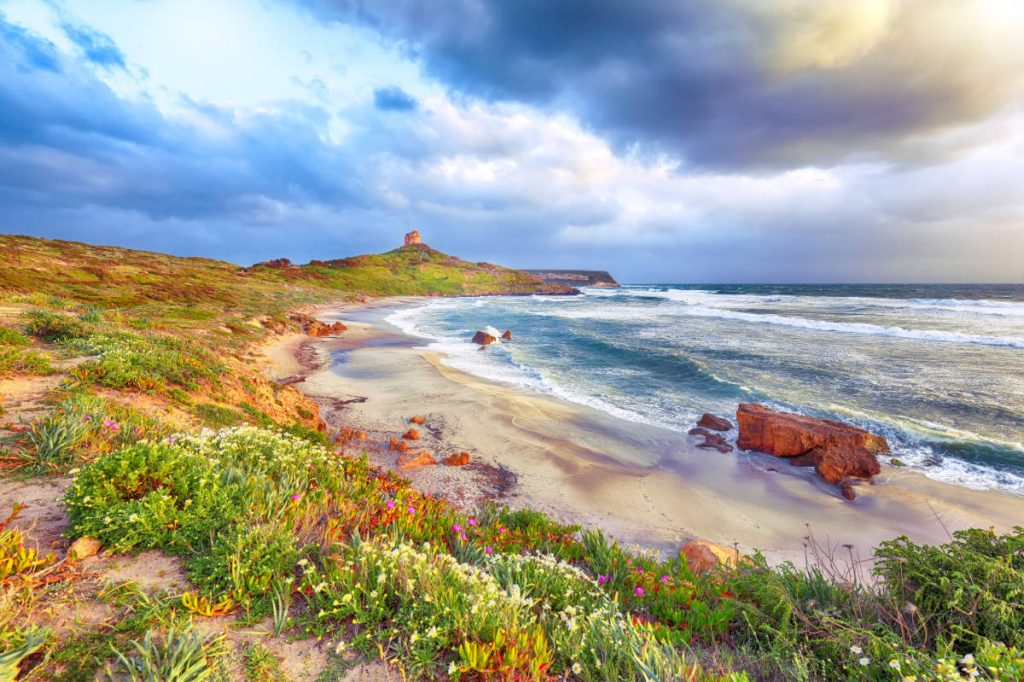
Get ready for an unforgettable journey with these
5 historical beaches you must visit:
1. Playa de Bolonia, in Tarifa
We dare to say that Bolonia Beach is one of the most beautiful beaches in Andalusia. Its crystal-clear waters, white sand, and impressive dune make it an ideal coastal destination. Moreover, right behind the beach is Baelo Claudia, an ancient Roman city with well-preserved remnants of all the most representative elements: the forum, temples, aqueducts, a basilica, a theater, the wall, and more. It is one of the most complete examples of a Roman city in Spain.
The archaeological site of Baelo Claudia is open to the public and can be visited all year round. There is a visitor center with detailed explanations about the city’s history.
The beach is about 20 km from Tarifa, and you can reach it by car in about 30 minutes; however, be patient when looking for a parking spot if you go there on busy days.
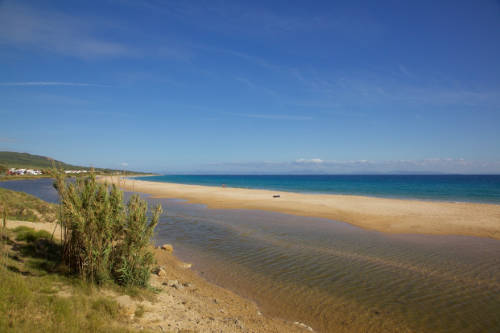
Bolonia
Tarifa
2. Spiaggia di San Giovanni di Sinis, in Sardinia
San Giovanni di Sinis Beach is located on the Sinis Peninsula, on the island of Sardinia. Like many of the island’s spectacular beaches, it is known for its turquoise waters and white sand. Here you will find a place to enjoy a tranquil and natural environment, but you can also discover the ancient city of Tharros.
Founded by the Phoenicians and later occupied by the Romans, Tharros is located right next to the beach. The archaeological remains include temples, baths, and ancient streets. The archaeological site is open to visitors and offers guided tours explaining the historical significance of Tharros. There is also a small museum with artefacts found in the area.
Besides the Tharros archaeological site, near the beach is Cape San Marco. If you feel like exploring this coastal area, the views along the trails are spectacular, with other historical remnants along the way.
San Giovanni di Sinis is 18 km from Oristano and 12 km from Cabras, and can be reached by car or bus (line 430).
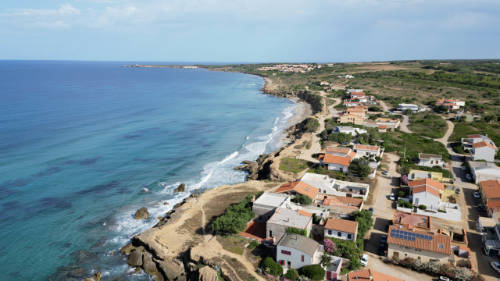
Spiaggia di San Giovanni di Sinis
Cabras
3. Platja del Miracle, in Tarragona
Playa del Miracle is an urban beach with golden sand, near the yacht club and port, as well as the city center. But what makes it special is its proximity to the Roman Amphitheater of Tarragona, located just a few meters from the beach.
Built in the 2nd century, it is an oval-shaped building with seats carved into the rock. It had a capacity for 14,000 spectators, and gladiatorial combats and other public spectacles were held inside.
The Roman Amphitheater of Tarragona is open to the public and can be visited all year round. Additionally, Tarragona has many other Roman sites to explore, such as the Roman circus or the walls.
Since it is an urban beach located a few minutes’ walk from the city center, you can complete your visit by enjoying the varied gastronomic and cultural offerings of the city.
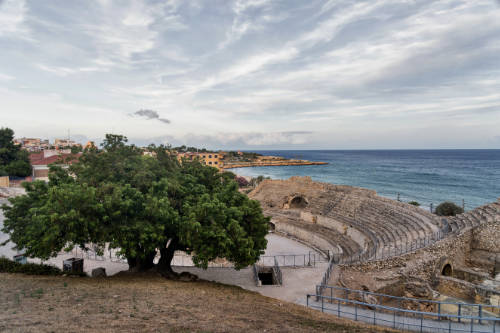
El Milagro
Tarragona
4. Spiaggia di Nora, in Sardinia
Also located on the spectacular island of Sardinia, this time on the southern coast of the island, Spiaggia di Nora is a beach with clear waters and fine sand, which is already a great attraction. Very close to the beach is the ancient city of Nora, the first Phoenician city in Sardinia, later taken over by the Romans, and one of the most important archaeological sites on the island.
The site includes a Roman theater, baths, and well-preserved mosaics. It is open to visitors and offers guided tours that explain its history and significance.
Nora is about 4 km from Pula and just under 40 km from Cagliari, the capital city of the island.
Besides the possibility of visiting the ruins, Nora Beach offers a spectacular environment for snorkelling and diving.
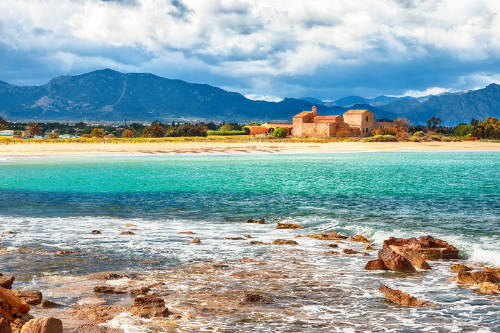
Nora
Pula
5. Banyets de la Reina, in El Campello
Banyets de la Reina Beach is a small beach known for its rocky formations and clear waters, ideal for snorkelling and underwater exploration.
Next to the beach is La Illeta dels Banyets, an archaeological site with remains from different periods, from the Bronze Age to Roman times.
The “Banyets de la Reina” (Queen’s Baths) that give the beach its name are ancient Roman fish farms carved into the rock, heavily eroded by the sea. What remains of them are four interconnected pools with channels to introduce seawater.
It is possible to visit the La Illeta site and the Torre de la Illeta, where guided tours are offered. The fish farms can be explored freely, and the transparency of the water allows clear visibility of the structures.
The beach is next to the Yacht Club, less than 2 km from the center of El Campello, so it is possible to walk there, and it’s about 15 km from Alicante, from where you can reach it by car. It’s also possible to get from Alicante to El Campello by tram or bus.
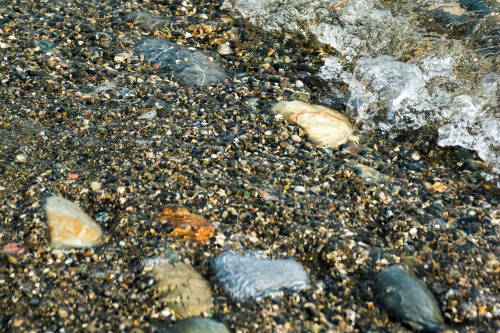
Banyets de la Reina, Baños de la Reina
El Campello
We hope you find this selection of beaches interesting and encourage you to visit these unique places that offer the opportunity to enjoy a day of sun and beach while discovering the history of ancient civilisations.

We had a larger selection of beaches, but we didn’t want to make the article too long, so if you’re interested in the topic, leave us a comment and we will do a part 2 with more spectacular historical beaches.
Did you know any of these beaches and archaeological sites? If so, tell us what you think and share your photos in the app if you visit them. Happy summer!



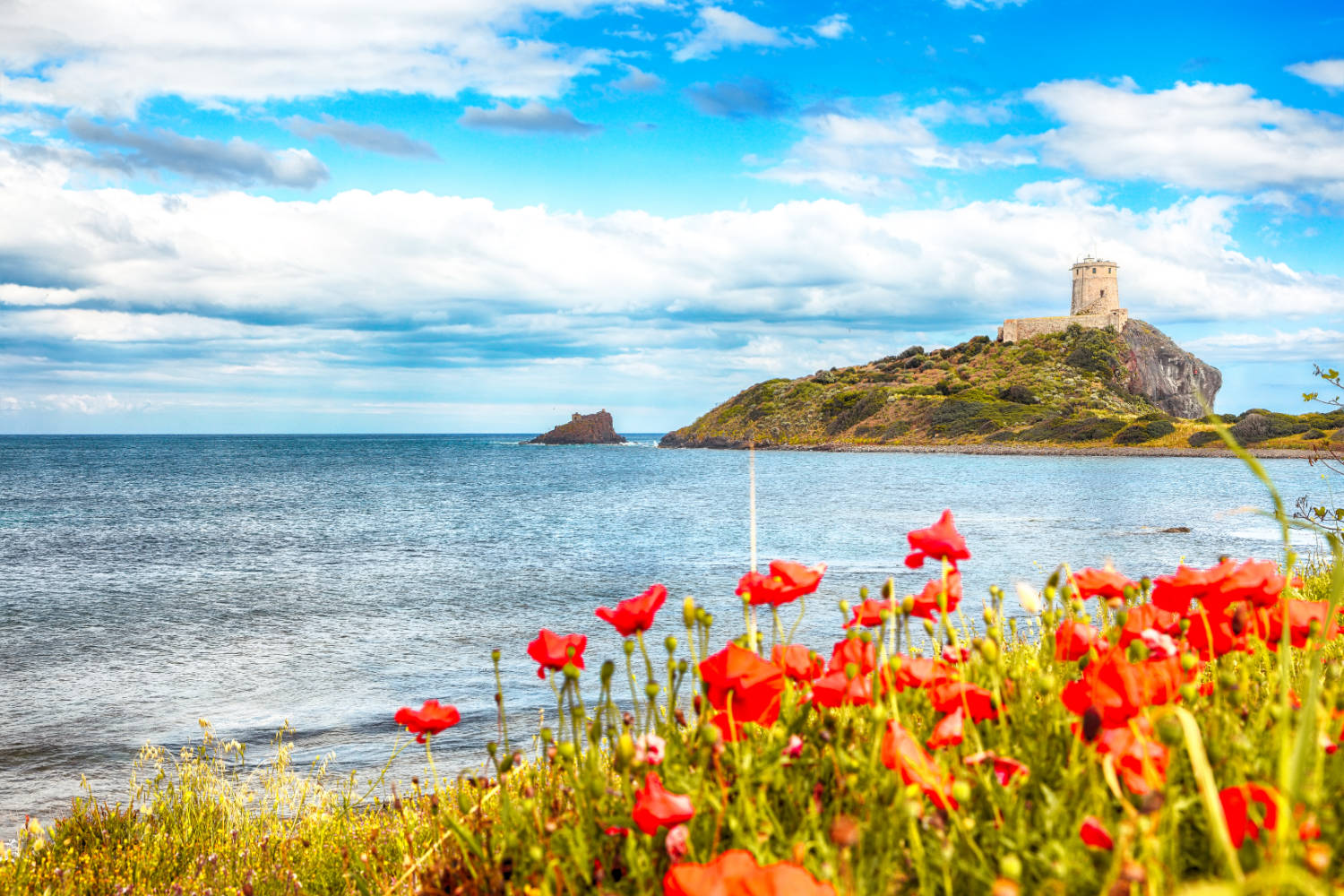
Leave a Reply